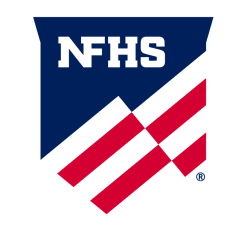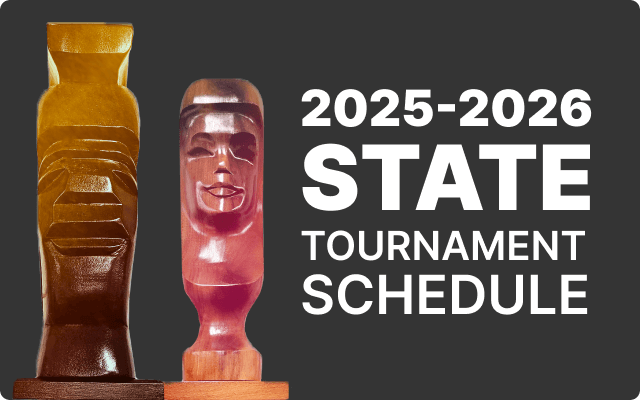INDIANAPOLIS, IN (July 12, 2021) — Two significant player equipment changes involving the wearing of head coverings and beads were among the rules revisions approved in high school softball for the upcoming 2022 season.
These changes along with six other rules revisions were recommended by the National Federation of State High School Associations (NFHS) Softball Rules Committee at its June 14-16 meeting held in a virtual format and subsequently approved by the NFHS Board of Directors.
In Rule 3-2-5b, language that previously prohibited hard items to control the hair, including beads, has been removed from the rules book. The committee did not believe that the use of hard items, such as beads, presented an injury risk to other players. In contrast, the prohibition of such items has been interpreted as adversely affecting one’s cultural background.
In addition, head coverings worn for religious reasons in high school softball no longer will require prior approval from the respective state high school association. The revised Rule 3-2-5c states that “head coverings worn for religious reasons must be made of non-abrasive, soft materials and must fit securely so that it is unlikely to come off during play. Head coverings worn for medical reasons require state association approval.”
The Softball Rules Committee is the seventh NFHS sports rules committee that has modified rules this year related to religious and cultural backgrounds. In addition to softball, participants in volleyball, basketball, soccer, field hockey and spirit will be permitted to wear religious headwear without prior approval from their respective state association. In swimming and diving, for religious reasons, competitors will be able to wear suits that provide full body coverage without obtaining prior state association authorization.
“The NFHS, in its effort to be a learning organization and one that is founded on the basis of inclusion is striving to work with our young participants in our efforts to celebrate the beautiful diversity that continues to increase,” said Dr. Karissa Niehoff, NFHS executive director, in a recent The NFHS Voice. “We are excited about that and want to support that. And while we will always strive to keep kids safe and keep games being played the way they were designed to be played, we do want to recognize the importance of a young person’s identity.”
In other changes to high school softball rules, new ball specifications will be required effective January 1, 2025, for high school competition. Balls manufactured with current specifications will be permitted for use through 2024. The change in 2025 will occur in compression and weight/circumference for balls in fast-pitch competition. The changes in the way the requirements are specified do not represent a difference in ball performance but allow for better control over the manufacturing process.
A change also was made in Rule 8-2-6 regarding a batter-runner being called out for interference. A runner now will be considered outside the running lane if either foot last contacted the ground completely outside the lane.
“Based on previous wording, some umpires established their ruling on whether the runner’s foot was on the ground or in the air when the interference occurred,” said Sandy Searcy, NFHS director of sports and liaison to the NFHS Softball Rules Committee. “The new wording more adequately describes the intent of the rule and will provide more consistent enforcement.”
A new article and penalty were added to Rule 3-6 regarding damaged bats. Article 21 states that “batters shall not use a damaged bat that was previously removed from the game by an umpire.” And the accompanying penalty is as follows: “The batter shall be called out and the offender and head coach shall be restricted to the dugout for the remainder of the game.”
Other high school softball changes for 2022 include the following:
Rule 1-2-1 – Bases for first, second and third may be designed to disengage from their anchor system. This language was added to Rule 1 where all field and equipment rules exist. Similar language is already addressed in Rule 8-8-14 EFFECT, which states that a runner reaching a base safely will not be out for being off the base if it becomes dislodged.
Rule 3-5-3 – New language defines what is permissible attire for coaches during a game.
Rule 6-2-2 – The following language was moved to a Note to provide support to keep pitchers legal but removed the discrepancy in penalties from Rule 3-2-9: “A pitcher shall not wear any item on the pitching hand, wrist, arm or thighs which the umpire judges to be distracting to the batter.”
A complete listing of the softball rules changes will be available on the NFHS website at
www.nfhs.org. Click on “Activities & Sports” at the top of the home page and select “Softball.”
According to the most recent NFHS High School Athletics Participation Survey, fast-pitch softball is the fifth-most popular sport for girls with 362,038 participants in 15,877 high schools nationwide. The survey also indicated an additional 6,602 participants in slow-pitch softball.










